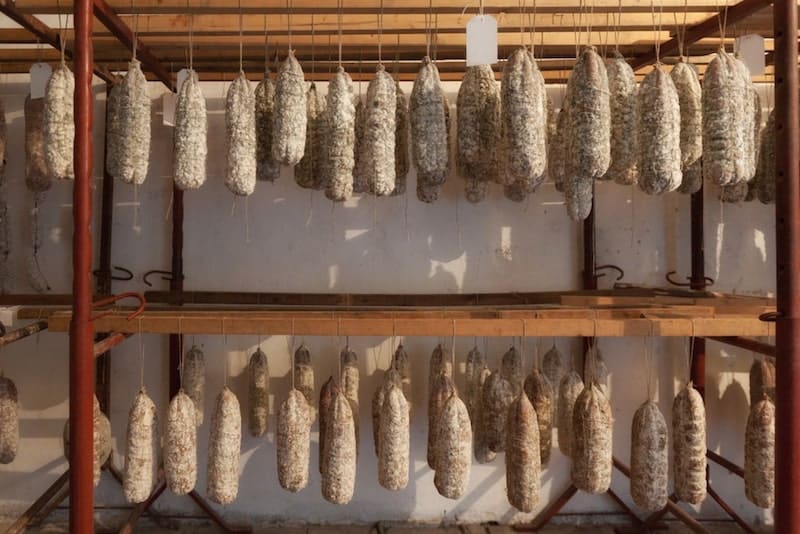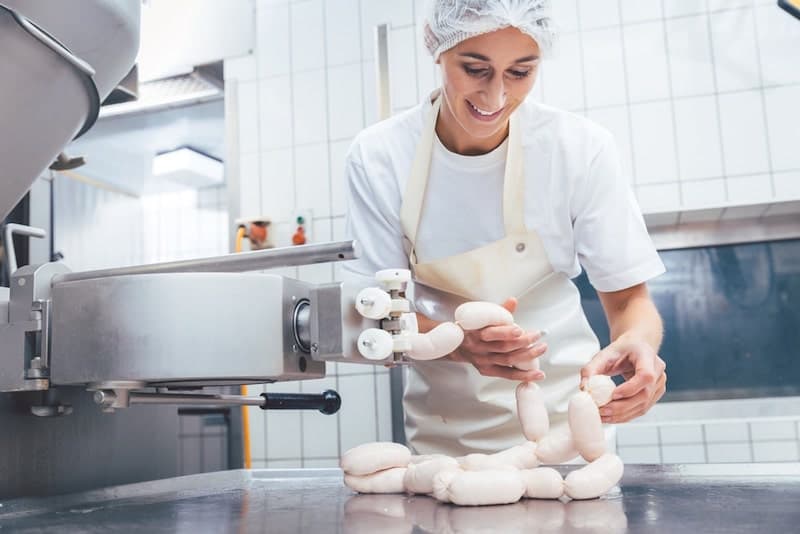Making Salami Without Starter Culture
If you’ve ever considered making your own salami, you’ve probably researched many different methods you can use to produce the meat. But have you ever thought about making salami without starter culture?
The important steps include picking the right meat, curing, grinding, stuffing, fermenting, drying, and storing. Keep reading to find out everything you need to know about the process.

Do You Need Starter Culture for Salami?
Before we dive in, let’s talk about starter cultures and how they work.
Starter cultures represent a single strain or a combination of different strains of bacteria. When mixed with meat, they have multiple beneficial effects.
Namely, they help improve the color, flavor, and smell, but most importantly, they make the meat safe to eat.
Clearly, starter cultures have numerous benefits, but do you actually need starter cultures for salami?
The answer to this question is no. Making salami without a starter culture (like bactoferm, for example) is possible.
This traditional method of preparing meat existed long before starter cultures were widely available for purchase.
In this case, you don’t add starter cultures at all, but there are different steps you have to follow to make sure your salami is of the best quality and safe to use.
How to Make Salami Without Starter Culture
By not adding starter cultures, you rely entirely on the bacteria that already exist in the salami.
Below, we’ll take a look at how to make salami without starter cultures.
Meat Selection
It’s important to choose fresh meat since it reduces the chances of the meat being infected with bacteria. Note that the meat of a healthy animal does not contain bacteria.
Hence, it’s essential to make sure you handle the meat properly.
The sooner you process the meat, the better because this lowers the risk of contamination.
Of course, it’s not possible to eliminate bacteria, but it is crucial to reduce the risk as much as possible.
Curing
In this stage, you add salt and sugar to the meat. You should also add curing salt (which contains sodium nitrate), a preservative that will destroy the harmful bacteria in your salami and keep the meat safe.
When curing, you increase the flavor, smell, and color of the meat. During this process, you give the good bacteria time to develop.
However, harmful bacteria will also develop. That’s why you add salt and nitrate – these bacteria are not salt resistant, and their growth will be slowed.
Grinding
This step isn’t mandatory, but if you grind the meat, the mix from the previous step will penetrate the meat.
It’s essential to do so at low temperatures, not higher than 54° F (12°C).
Stuffing – Putting the Meat in Casings
Here you have numerous choices – you can go with natural or synthetic fibrous casings with different diameters.
However, if you choose natural ones, you should know that an animal’s intestinal tract is contaminated with bacteria.
Therefore, even though they are cleaned and washed, you should always take extra precautions to make casings 100% safe since they can contaminate the meat once they come into contact.

Here are some steps you should follow:
- Make sure you perform a visual inspection of the casings – they should be white.
- Salt them and keep them in your fridge.
- One hour before stuffing, you should desalt them in cold water. Then, use a 2% vinegar solution to wash the casings to ensure they are clean and safe.
Fermentation
This is a crucial step where you increase the temperature of salami for the bacteria in the meat to grow.
Since you’re making salami without starter culture, lower temperatures are recommended.
The length of fermentation will depend on the temperature – for example, at 66-76° F (18-24° C), fermentation will last for about 1-2 days. If the temperature is around 50-54° F (10-12° C), fermentation will last for about a week.
In this step, it’s essential to use a pH meter to check the acidity of the salami. Without it, you can’t be sure when the fermentation process is over.
For traditionally prepared salami, the pH should be around 5.2.
Also, it is crucial to pay attention to humidity; it should be kept at approximately 90-95%.
Drying
This is the longest part of the process. It lasts for about 2-3 months and is accomplished at 50-58° F (10-14° C).
After that, the temperature can be higher, and the period of drying shortened.
Humidity is again an important factor; it should vary between 70-85%. If possible, you can gradually lower the humidity to 75% for the best results.
Drying time can be influenced by different factors, such as:
- Size of casings (if the casing is bigger, it will take longer to dry)
- The amount of fat in the meat (more fat = faster drying)
- Humidity and temperature (lower humidity and higher temperature = speedier drying)
- Airspeed (more air draft = faster drying)
Storing
When the water activity reaches the level of 0.89 or lower, that’s when your salami is ready to be stored at cool temperatures.
It should be kept in a cold, dark, and well-ventilated area.
The humidity level should be maintained at around 75% since any higher level can result in mold growth.
Tips for Making Salami Without Starter Culture
Here are some tips for making salami without starter culture easily:
- First, always make sure the area and the equipment you’re working with are clean. This is significant for the prevention of bacteria spreading around the room and possibly infecting the meat
- When mixing all the ingredients, don’t add water. Water is not used in traditional meat preparation methods since bacteria can easily develop in moist areas
- Don’t add fresh spices to the meat. They can contain moisture or unknown bacteria, so avoid using them if you want to make salami without a starter culture.
- When grinding, don’t take large amounts of meat out of the fridge to grind. Instead, only take what you need so that the meat doesn’t go bad.
In Summary
Now you’ve learned how to make salami without starter culture, you can enjoy this delicious sausage by only adding ingredients of your own liking.
This will not only prove cost-effective but will allow you to try out different techniques to get the best results.
Just make sure you follow our step-by-step guide and all the additional tips, and you can’t go wrong.








